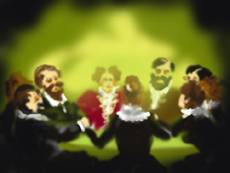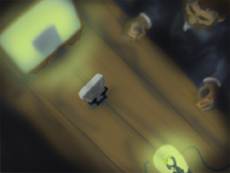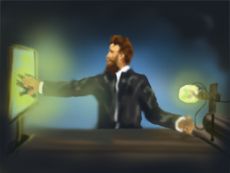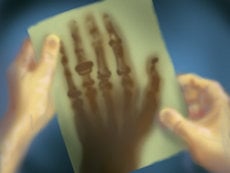The discovery of X-rays

The apparition was so awful that Wilhelm Conrad Röntgen (The Nobel Prize in Physics 1901) wondered if he had taken leave of his senses. He could hardly have been more surprised if he had looked into a mirror and no reflection stared back. It was approaching midnight on November 8, 1895. For sometime scientists had been reporting bizarre apparitions when they electrified the thin gas in vacuum tubes. The English physicist William Crookes, who saw unearthly luminous clouds floating in the air, had become convinced that he was producing ectoplasm, much beloved of Victorian seances, and had turned to spiritualism as a result. In Germany Röntgen was doing similar experiments and now, alone in the night, his imagination ran wild.

Somehow Röntgen's electrical device was producing rays that seemed to be impervious to matter, but at last he found something to stop them: lead left a shadow proving that the mystery rays were definitely real.
Earlier that day, as the November dusk darkened the laboratory, he had noticed that whenever he made sparks in the tube, a fluorescent screen at the other end of the laboratory table glowed slightly. This was the signal that he had been looking for, the sign that invisible rays were being produced in the spark tube, crossing the room and striking the screen, producing the faint glimmer. To track the rays he had been putting pieces of card in their way, but the screen continued to glow whether the cards were there or not as if the rays were able to pass clean through them. He then tried to block the rays with metal but thin pieces of copper and aluminium were as transparent as the card had been.

He moved a piece of lead near to the screen, watching its shadow sharpen, and it was then that he dropped it in surprise: he had seen the dark skeletal pattern of the bones as his hand moved across the face of the screen. Still doubting what he saw he took out some photographic film for a permanent record. Röntgen had made one of the most monumental discoveries in the history of science: X-rays, and seen for the first time images that are today common in every hospital casualty department.

Six weeks later, on the Sunday before Christmas 1895, he invited his wife Bertha into the laboratory and took a shadow-graph of the bones of her hand with her wedding ring clearly visible. This is one of the most famous images in photographic history and propelled him within two more weeks into an international celebrity. The medical implications were immediately realised and the first images of fractured bones were being made by January 1896 even though none yet knew what the mystery rays were.
MLA style: "X-rays". Nobelprize.org. Nobel Prize Outreach AB 2022. <http://nobel-external-educationalgames-app.azurewebsites.net/educational/physics/x-rays/history.php>